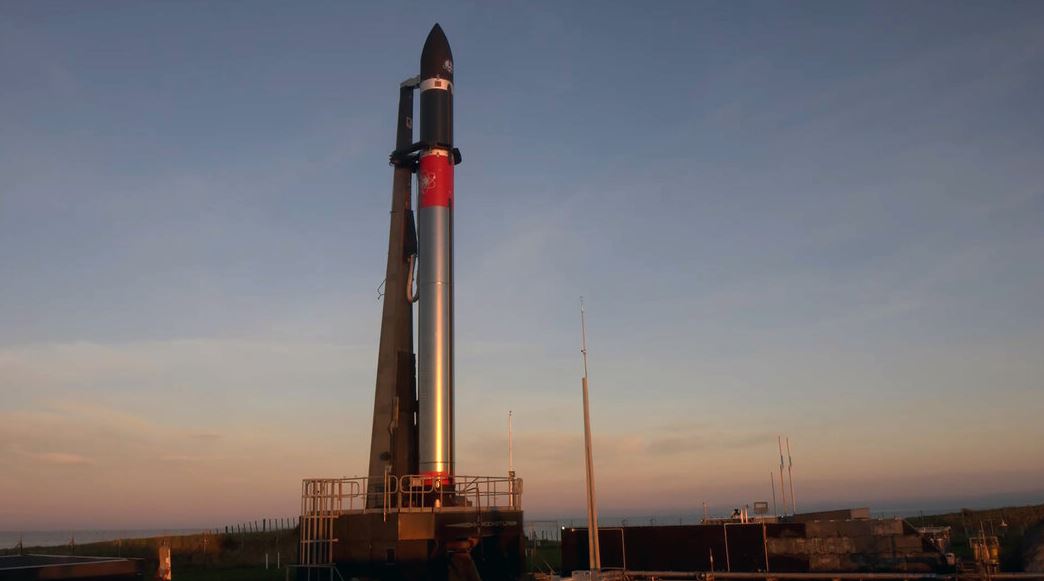Following the successful launch of a payload of 34 tiny satellites into orbit, the business utilised a helicopter to recover the rocket’s spent booster stage, which measured 39 feet in length and crashed into the Pacific Ocean.
Future plans for Rocket Lab include the refurbishment of a recovered rocket and the subsequent use of the booster for another orbital flight, an accomplishment that has so far been accomplished by just one company: Elon Musk’s SpaceX.
A live camera feed from the helicopter showed a lengthy rope hanging from the aircraft, with overcast sky visible below the chopper. Then the rocket, which was hanging behind the parachute, came into view.
However, the corporation then published an update in which it classified the achievement as a triumph. As reported on Twitter by Peter Beck, the CEO of Rocket Lab, pilots noted that the rocket was not hanging below the helicopter quite as it had been during test flights, and they decided to let it crash down in the water, where it was collected by a Rocket Lab ship.
Eventually, Rocket Lab would want the helicopter to transport a stranded rocket all the way back to land, preventing damage caused by salt water, which makes reuse of a booster difficult, if not impossible.
The titles of most of Rocket Lab’s missions are humorous in nature. ‘There and Back Again’ was the title of this one, as a tribute both to the recovery of the booster and to the subtitle of J.R.R. Tolkien’s masterpiece “The Hobbit.” New Zealand served as the location for the filming of the Hobbit trilogy directed by Peter Jackson.
The booster catch developed by Rocket Lab is the latest advancement in an industry where rockets were formerly pricey single-use disposables. It is possible to reuse all or a portion of a rocket, which lowers the cost of carrying payloads to space and potentially speed up the pace of launching by lowering the number of rockets that need to be constructed.
SpaceX was a pioneer in the field of reusable rockets, and the company currently successfully lands the first stages of its Falcon 9 rockets on a regular basis and re-flies them several times. However, the second stages of the Falcon 9 (as well as Rocket Lab’s Electron rocket) are still discarded, with the majority of them burning up as they re-enter the atmosphere of the Earth. SpaceX is developing its next-generation super rocket, Starship, with the goal of making it completely reusuable. Competitors like as Blue Origin and United Launch Alliance, as well as Chinese businesses, are working on reusable rockets that are at least partly capable of returning to the launch pad.
Also largely reusable, the NASA space shuttles needed considerable and costly maintenance after each trip, and they failed to live up to their promise of airliner-like operations.
According to SpaceX’s Falcon 9, the rocket burns many times after it separates from the second stage, slowing the spacecraft down as it approaches its destination, which might be a floating platform in the water or a location on land. The Electron is a significantly smaller rocket, which makes it more difficult to re-use after launch.
Instead, Rocket Lab researchers devised a more fuel-efficient solution, which included the addition of a system of thrusters that expels cold gas to orient the rocket as it descends, as well as thermal shielding to keep it safe from temperatures surpassing 4,300 degrees Fahrenheit throughout the flight.
It split from the second stage at a height of about 50 miles and accelerated to a speed of 5,200 miles per hour as it descended.
According to Mr. Beck, “if we came in flat, for example, from the side, the rocket would simply burn itself up.” For this reason, we must orient and manage the first stage in order to maintain a low temperature with the heat shield and engines off during the whole flight profile.”
The friction of the atmosphere served as a damper on the spacecraft’s progress. The pace of the booster’s descent dropped to less than twice the speed of sound about 7 minutes and 40 seconds after liftoff, according to NASA. At that time, a tiny parachute known as the drogue was released, which increased drag even further. With a bigger primary parachute, the booster could travel at a slower, more leisurely pace.
When a Sikorsky S-92 helicopter was hovering nearby, it collided with the booster when it was in mid-flight, pulling a wire with a grappling hook across the line connecting the drogue and main parachutes.
The rocket was much lighter than it had been during launch since practically all of its fuel had been used up. While not very large, the cylinder was over four feet in diameter and roughly as tall as a four-story structure, and it weighed nearly 2,200 pounds, or nearly a metric tonne, when fully assembled.
Mr. Beck said that Rocket Lab would prefer to capture boosters for around half of its flights in the future. In addition to the thrusters, parachutes, and thermal protection, the payload of 550 pounds is reduced 10 to 15 percent as a result of the additional weight.
Sooner or later this month, Rocket Lab might launch CAPSTONE, a NASA-funded but commercially managed mission that would examine the moon’s extremely elliptical orbit, which could be exploited by a future American lunar space station. Prior to the end of this year, Rocket Lab intends to begin utilising a second launch site on Wallops Island in Virginia, which is now under construction.

